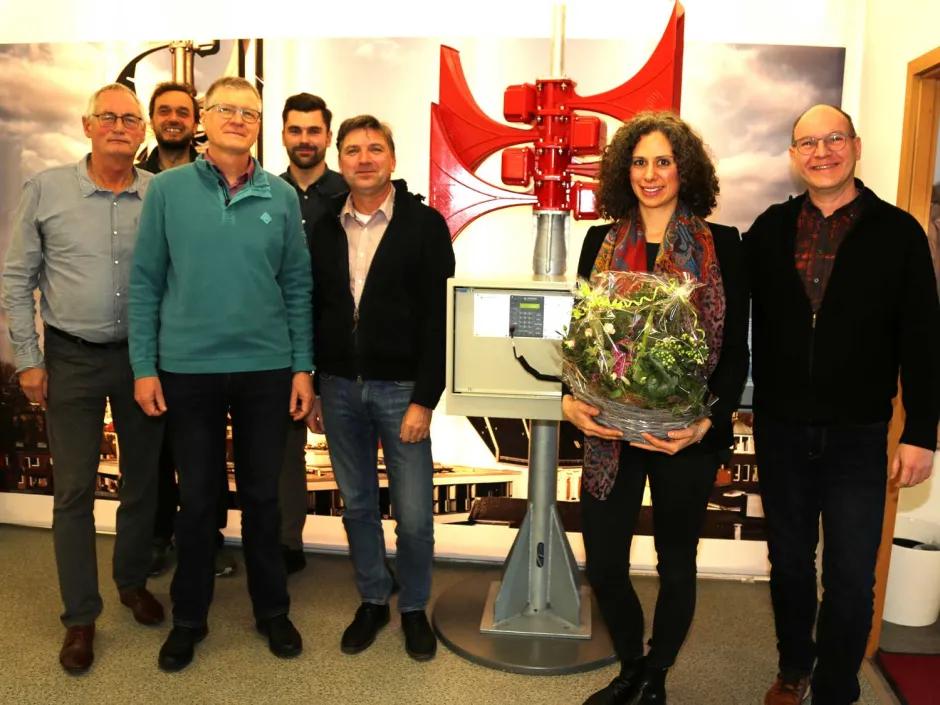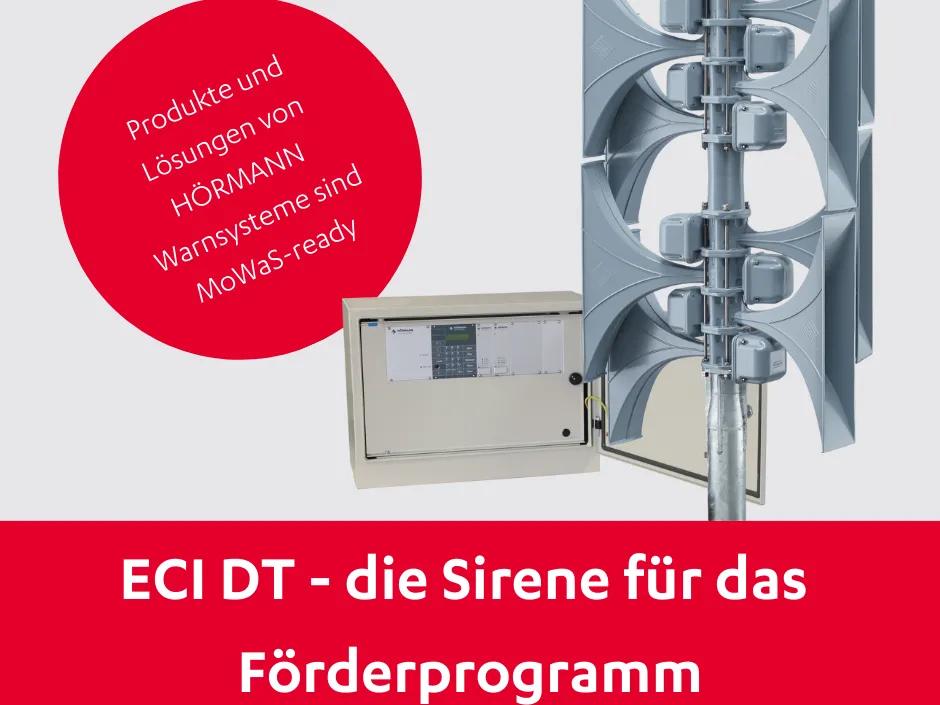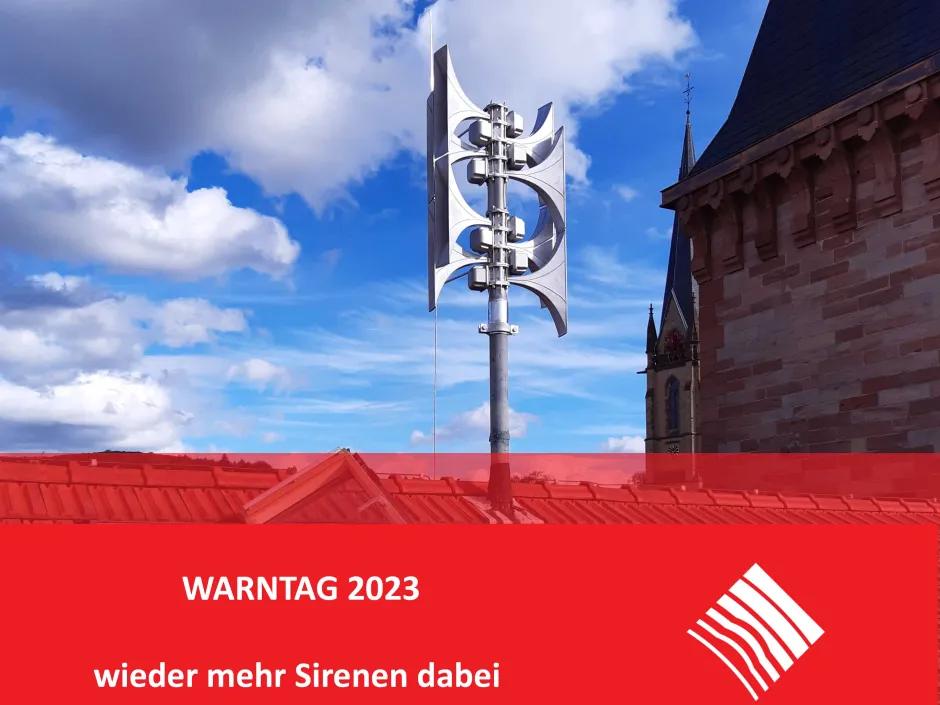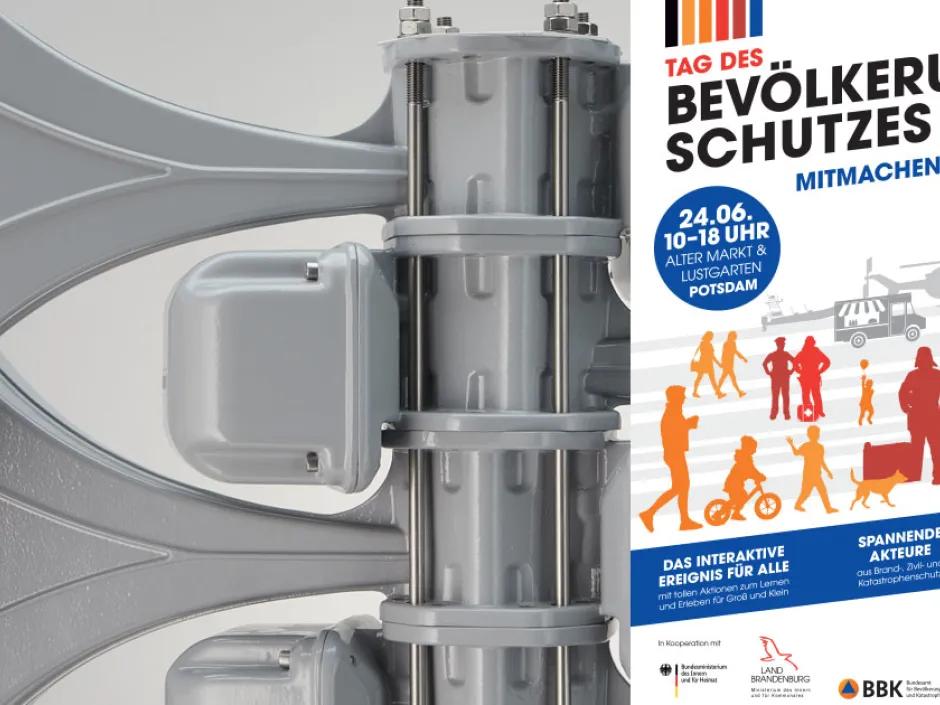What is a siren warning system
A siren consists of the siren horns and the corresponding siren cabinet. Each of our ECN-D electronic sirens has a certain number of horns. The number of horns is determined by the required sound power. This is based on the site planning and a sound forecast. The electronic siren is powered by batteries. This ensures that the siren is operational even if the mains voltage is interrupted.
These electronic sirens are connected to a control centre. Such a control centre is the heart of a siren warning system. It also includes components for monitoring, controlling and triggering the sirens. This can be a touch panel and a triggering option directly on the siren in the siren cabinet, a remote control panel for remote triggering or a software-based monitoring and control station with a connected triggering option. In the case of large siren networks, it often makes sense to have several control centres or several control stations (see "Structure of siren warning systems").
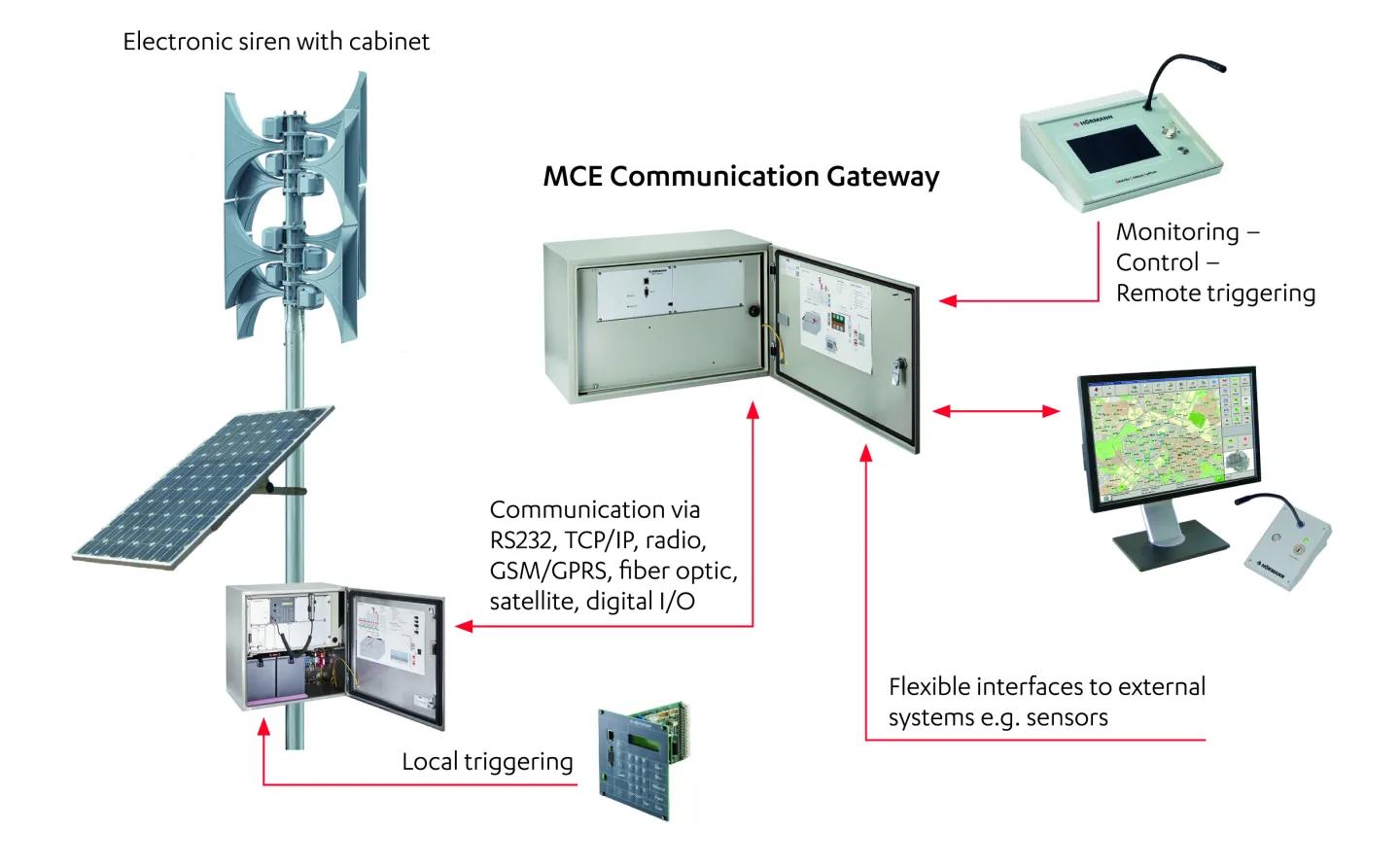
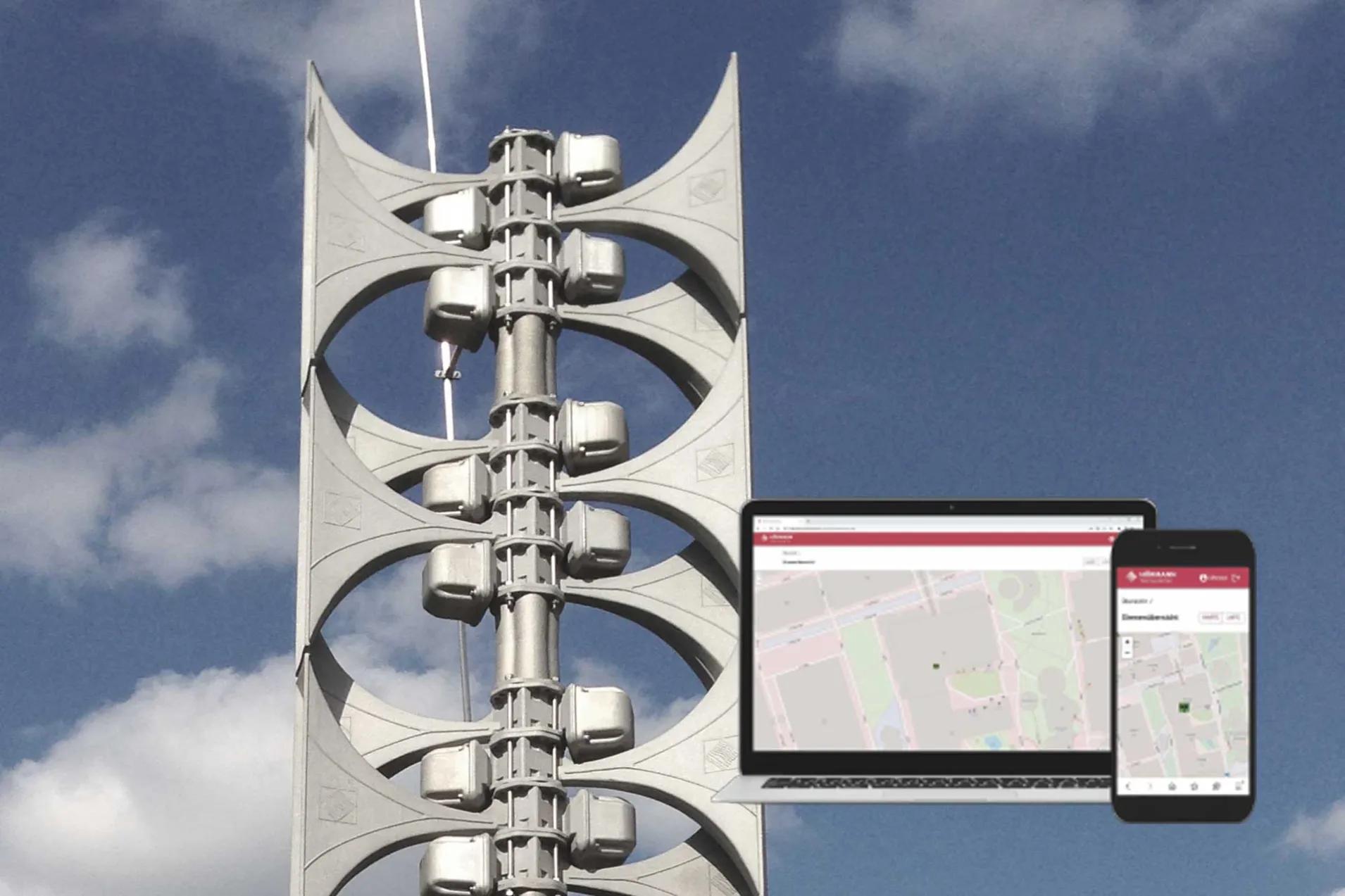
SIMON Status monitoring of siren warning systems
Monitor the status of your siren system online with SIMON
SIMON is a secure, cloud-based solution for monitoring the status of our siren warning systems. It supplements existing feedback systems such as our CCCS operating software with the option of monitoring siren status outside the central control centre. This allows fire brigades, municipalities or service technicians to monitor their sirens via a web browser on a mobile phone, tablet or PC. SIMON is also suitable as a supplement to siren warning systems without an existing feedback system.
There is often a reluctance to actively manage the sirens on the internet. That is why SIMON limits itself to status display via the cloud. This is possible without security concerns.
The modern, cloud-based web platform stores the status data of the sirens and makes it available online to authorised users. User rights can be individually defined, such as which sirens and which status data a user sees.
In interaction with an existing feedback system such as the PC-based solution CCCS, the software reports the status of the sirens directly to SIMON via a secure connection. The existing communication can be used. As a stand-alone solution without an existing feedback system, the sirens report their status independently.
Features:
Secure login in the cloud via security functions
Authorised access for individual users with different rights
Transmission of the siren status generally once a day to the cloud
Additionally:
- Message in case of technical problems
- Message when an alarm is triggered
Different views:
- Overview
- History
- Details
- Last alarm
Summary:
SIMON modernises siren monitoring: the status of sirens is available to selected users at any time and from anywhere. Fault analysis is simplified by a detailed problem report directly to the user's mobile phone. With its cloud-based approach, SIMON is a further step towards digital disaster management.
Advantages:
- Extension of feedback to additional users
- Remote monitoring of the siren status
- Siren status can be monitored at any time and from anywhere via the web
- Active reporting to external (e.g. maintenance technicians) in case of technical problems
- Increase of system availability through timely detection of malfunctions
